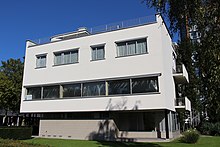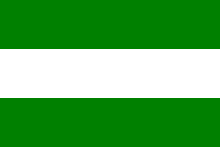Het Nieuwe Instituut
Het Nieuwe Instituut (HNI, English: The New Institute) is a cultural centre in Rotterdam, the Netherlands. It focuses on architecture, design, and digital culture. HNI is in a building designed by Jo Coenen at Museumpark 25 in the centre of Rotterdam, adjacent to the Museum Boijmans Van Beuningen. The building contains a shop, exhibition space, study centre, and archive, as well as the Sonneveld House (a prime example of Nieuwe Zakelijkheid architecture), a pond, and a small park.
 | |

| |
| Location | Rotterdam, the Netherlands |
|---|---|
| Coordinates | 51°54′53″N 4°28′15″E |
| Type | Cultural centre |
| Architect | Jo Coenen |
| Website | hetnieuweinstituut.nl |
Formation
Het Nieuwe Instituut (HNI) was formed in 2013, when then-secretary of state for Education, Culture, and Science Halbe Zijlstra ordered the merger of the Dutch institutes for architecture, design, and e-culture.[1] Thus the Netherlands Architecture Institute, Premsela Dutch Platform for Design and Fashion, and the Virtueel Platform were put together in the building at Museum Park 25, which was designed by Jo Coenen, and opened by Queen Beatrix in 1993.[1][2]
Facilities
At HNI, exhibitions are presented in the Museum of Architecture, Design and Digital Culture.[3] The building also contains the national collection for Dutch architecture and urban planning, an agency, a study centre, a bookshop and a cafe.[4] The archive contains over 18 kilometres of architectural resources.[2] This includes the personal collections of many Dutch architects.[2]
Sonneveld House Museum

The Sonneveld House, across the street from the HNI main building, was opened to the public in 2001. The house was designed by Johannes Brinkman and Leendert van der Vlugt (who also constructed the Van Nelle Factory), and it is an example of Nieuwe Zakelijkheid architecture. It was owned by Albertus Sonneveld, who lived there from 1933 to 1955.[5]
References
- van Dijk, Hans (10 March 2017). "History of the temporary architecture institute". Archined (in Dutch). Archived from the original on 2 September 2019. Retrieved 18 July 2020.
- "Het Nieuwe Instituut". AAD. Retrieved 18 July 2020.
- "Het Nieuwe Instituut". Rotterdam Tourist Information. Retrieved 18 July 2020.
- "Het Nieuwe Instituut". Het Nieuwe Instituut. Archived from the original on 14 July 2020. Retrieved 18 July 2020.
- Rawsthorn, Alice (3 February 2015). "Showing a Dutch House Through the Looking Glass". The New York Times. Archived from the original on 29 November 2019. Retrieved 18 July 2020.
